ADA Compliance for Insurance Agency Websites
FREE Insurance Agency Resource
Read Time
10 minutes
Designed To
Look Amazing, Get Found, Sell More, Service Better
ADA compliance for insurance agency websites.
Obviously, it’s important to have a website that is accessible to as many people as possible. Generally speaking, that’s the underlying intent behind accessibility guidelines.
And while that’s simple enough to understand and want, we must also recognize that there’s a lot of gray area with ADA compliance specifically. The laws, standards, and best practices are still not precisely defined, and the automated tools some people use to determine if a website is compliant are far from perfect.
In addition, it’s not uncommon for legal companies to send templated, pre-litigation letters in bulk to businesses within a given industry (such as insurance). These generic, scary-looking form letters typically state that the website is not compliant, and that one of the steps needed to address it is to pay their legal fees.
In this article, we’ll address all of this along with some things to consider when it comes to ADA compliance for insurance agency websites.
The table of contents.
Here’s what we’ll cover throughout this resource on ADA compliance for insurance agency websites.
- A brief overview of the ADA.
- What is website accessibility?
- What does it mean to be ADA compliant?
- ActiveAgency insurance agency websites and ADA compliance.
- Additional steps toward website accessibility.
- What should I do if I’m told my website is not ADA compliant?
- The outlook of ADA compliance and website accessibility for insurance agencies.
A brief overview of the ADA.
The Americans with Disabilities Act (ADA) is a civil rights law enacted in 1990 prohibiting discrimination against those with disabilities. The ADA protects individuals with disabilities in most aspects of public life and is broken down into sections called Titles. Title III of the ADA prohibits discrimination in “Public Accommodations and Commercial Facilities,” which some have argued should include website accessibility.
What is website accessibility?
Website accessibility is all about making the user experience of a website equal for everyone, especially those with disabilities. Many of us think of the internet as a place where everyone has the same access to information as the next person. It is often assumed that everyone can read the text on the screen, manipulate a mouse or touch the screen easily, and recognize visual cues that lead to a particular action. However, for many, this is not the case.
Think about your insurance agency’s physical location. Because of the ADA, your building is required to have certain features like wheelchair ramps or elevators. Now compare that with your website in terms of accessibility.
Increasing website accessibility involves removing barriers that might otherwise keep someone from accessing information. This is particularly important for independent insurance agencies because building relationships with clients and simplifying the insurance process is what you do on a daily basis. So in the same way that you want to make it easier for your clients to get insurance coverage, making sure they can actually access information on your website is essential.
What does it mean to be ADA compliant?
When the Americans with Disabilities Act of 1990 (ADA) was passed 30 years ago, the internet did not play the same role as it does now for businesses. Now that websites are the primary platform to learn about and interact with most types of businesses, much has changed in recent years.
The section of the ADA that is targeted in these lawsuits has been comparing a business’ website with that of their physical, brick-and-mortar location. At this time, there is no mention of website accessibility in Title III, however, courts are interpreting it to include websites.
The Web Accessibility Initiative, an organization focused on setting standards and strategies for making the web accessible, has developed Web Content Accessibility Guidelines, also known as WCAG. These guidelines highlight imperatives for developing sites with accessibility in mind—that sites should be “perceivable, operable, understandable, and robust.” In simple terms, this means that websites should be just as accessible for those with disabilities as they are for those without.
Here’s where it gets tricky. Currently, Title III of the ADA does not specifically address website accessibility and there are no legal guidelines on a federal level to address standards. While the federal government has indicated that websites must comply with the ADA’s requirement to not discriminate, it has yet to provide technical guidance on how to achieve that. The guidelines set forth in WCAG have therefore been accepted as the standard. The Ninth Circuit Court, as recently as early 2019, has also indicated that there is flexibility on meeting the requirement, seemingly in an acknowledgement that there is no legal standard at this time.
ActiveAgency insurance agency websites and ADA compliance.
Given the complexity of even determining what full ADA compliance is, determining a website’s level of compliance is extremely difficult. There are numerous tools that can measure “compliance,” and most websites, even those for some of the world’s biggest, most well-known companies, don’t come up as 100% compliant. This doesn’t give anyone a pass to ignore ADA, but it certainly muddies the water.
At Forge3, we strive to implement best practices when it comes to web design and development as it relates to website accessibility. Some of these tactics include, to the extent possible, having alt text on images, making link text unambiguous and easily understandable, having page titles that describe the content of each page, and implementing consistent and logical navigational menus to navigate the site, among others.
Another idea is to include a website accessibility note on each site’s contact page. For example, it could say, “We care deeply about providing the best online experience to all visitors. If you need help using our website or have a question about accessibility, contact us and we will be in touch.” This doesn’t make a website compliant, but it can help visitors by providing contact information to relay what is on the website, whether it’s requesting a quote or explaining the details of insurance coverage.
Additional steps toward website accessibility.
An additional way to supplement your site’s accessibility is to include a software overlay that offers accessibility controls such as changing the size of the text, adjusting the contrast and colors on the screen, and more. We don’t have any type of relationship with these vendors, but their solutions work well with ActiveAgency and may also provide another level of proactiveness and good faith effort in addressing any concerns.
One Click Accessibility

One Click Accessibility is a free third-party plugin that adds accessibility controls on top of the website. It involves a simple download and installation onto your website. We handle this step for you when you’re an ActiveAgency client.
UserWay

UserWay is another free plugin option. The UserWay widget offers tools for the visitor to adjust the site to help meet their accessibility needs. There are paid options in addition to the free version. Once your UserWay account is set up, you’ll receive a code that will need to be added to your website. For ActiveAgency clients, we add the code once the account is created.
AccessiBe

AccessiBe is a subscription-based option costing around $50 per month. It offers more features than the free plugins and provides monthly auditing of your site.
What should I do if I’m told my website is not ADA compliant?
If you receive a letter, email, or complaint that your website is not ADA compliant and lacks accessibility features, don’t panic. First, keep in mind that it’s virtually impossible for any website to be 100% ADA compliant, even for the tech giants. In general, there are an increasing number of both compliance companies and law firms trying to capitalize in the area of ADA compliance. Attorneys send threatening letters to companies (not just in the insurance industry) and demand money. Compliance companies say that they can easily fix the problem, but you need to pay them. And, businesses are stuck in the middle, not knowing what to do.
If you’re an ActiveAgency client, reach out to us and we’d be happy to review your site and discuss. And while we’re not attorneys, we work with a lot of insurance agencies, carriers, and associations and can provide a real-world perspective on ADA compliance, website accessibility, and those scary-looking letters.
If you’re not an ActiveAgency client, schedule a demo to see all of the features and benefits of the website platform for insurance agencies.
The outlook of ADA compliance and website accessibility for insurance agencies.
The topic of ADA compliance for insurance agency websites and website accessibility across all industries is only going to progress for the better to make websites more inclusive. We understand the importance of creating websites that include features that make website navigation easier for those with disabilities and will always be looking for ways to make the ActiveAgency platform more accessible. We also continue to monitor industry standards and best practices for web development, and we update our processes accordingly.
It’s unclear if or when the guidelines will become law in the United States, but in the meantime, our goal is to prepare for the future, designing insurance agency websites that function as intended no matter how it is accessed by someone.
Nothing contained in this resource is intended to be legal advice, but rather an explanation of ADA compliance and website accessibility as we understand it. It was last updated June 2022.
ActiveAgency Website Platform
ActiveAgency is the leading website platform for insurance agencies and includes Clickable Coverage, Hello Producer, Video Proposals, and many other sales and servicing tools.
Manage Your Website on Dashboard
If you want to manage your website, use our tools and features, and learn more about ActiveAgency, log in to Dashboard.
https://your-website-address.com/aalogin
If you'd rather speak to us, reach out to our Client Experience team.
Looking for more insurance agency resources?



